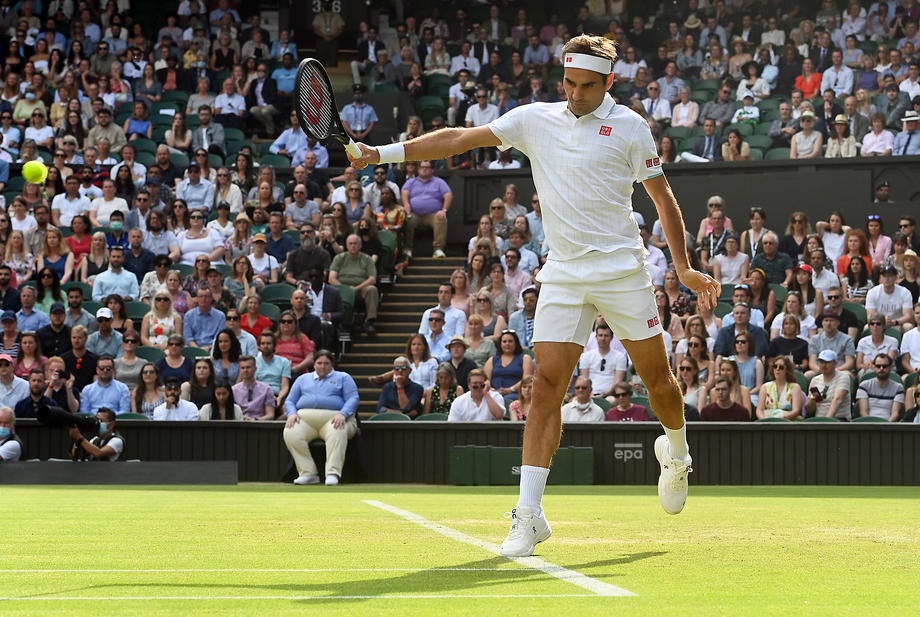- Stars Join Forces for Eisenhower Cup Return to Indian Wells on March 4
- Ken Thomas Broadcasting from Georgia’s Rome Tennis Open
- Solinco Launches All-New Whiteout V2 Racquet
- Stringlet: Serving Up Tennis Inspiration With A Twist
- Davis Cup qualifying to feature Brazil vs. France and Spain vs. Switzerland
- 2025 US Open Expands to Sunday Start
- Tennis Channel To Broadcast U.S. Davis Cup Qualifier vs. Tawain
- Stefanos Tsitsipas Receives Rotterdam Wild Card From Richard Krajicek
- Tien and Basavareddy to Play Delray Beach Open Qualifying
- Australian Open Tennis 2025 Ends with Madison Keys and Jannick Sinner As Winners By Alix Ramsay
- 2025 Australian Open Final Draws
- Jannik Sinner Sweeps Alexander Zverev for Second Straight Australian Open Title
- Ricky’s pick for the Australian Open final: Sinner vs. Zverev
- Australian Open Draws and Order Of Play for Sunday, January 26, 2025
- Madison Keys Upsets Defending Champion Aryna Sabalenka in Australian Open Final Thriller
Maria Sharapova Retires From Tennis • The Sport Will Miss Her Superstardom
- Updated: February 26, 2020
By Alix Ramsay
Maria Sharapova certainly knows how to make an entrance. When she burst into the public conscience in 2004, she did it by doing the unthinkable: by beating Serena Williams to win the Wimbledon final. A lanky 17-year-old, she took two blistering sets to transform herself into a fully-fledged champion.
And now, 15 years later, she knows how to make an exit. Not for her the hastily convened press conference to announce her retirement. Not for her the farewell tour, a long, drawn out affair punctuated by endless questions about how she feels or what she will miss. No, Sharapova has gone out in style.
Today, on February 26, 2020, she published an essay in Vanity Fair to tell the world that it was time to go. It wasn’t that she was fed up with losing (her current ranking is No.373 in the world and she last won a match in August; she has only played nine matches in the past 12 months) and it wasn’t because she was fed up with competing. It was simply because her right shoulder would not allow her to go on any longer.
“How do you leave behind the only life you’ve ever known?” she wrote. “How do you walk away from the courts you’ve trained on since you were a little girl, the game that you love—one which brought you untold tears and unspeakable joys—a sport where you found a family, along with fans who rallied behind you for more than 28 years?
I’m new to this, so please forgive me. Tennis—I’m saying goodbye.”
The piece recounts her journey from Russia to America, of the little girl, wide-eyed in amazement at the new country she and her father had come to. She tells of the highs and lows, that first huge win at Wimbledon, the other four grand slam victories and what it was that drove her on. She does not gush; she is not sentimental and she allows the reader in just far enough to understand a little more of the woman behind the stardom. But not too far. It is, as one would expect from Sharapova, both professional and polished.

“Throughout my career, Is it worth it? was never even a question—in the end, it always was,” she goes on. “My mental fortitude has always been my strongest weapon. Even if my opponent was physically stronger, more confident—even just plain better—I could, and did, persevere.”
That is the part of Sharapova that most people overlook: the perseverance. Everyone remembers the glitz and the glamour, the wins and the successes, but not many look at the countless hours spent sweating and grafting on the practice courts to make herself better and stronger. Or, as has been the case in recent years, in constant rehab on her ailing shoulder.
The problems started more than a decade ago and when in 2012 she won the first of her two French Opens, she was making her way back from surgery to repair a rotator cuff injury that had been misdiagnosed months before. She was 25 and most thought her career was over before the surgeon got to work.
“I had my doubts,” she said back then, “because I would always ask around like, who had such problems and who recovered from it and who had surgery, and who got back to the top and I didn’t get many answers back, which was a little frightening. You always want to look towards the positives.
“Of course you speak to the doctors and they’re always optimistic and they want to get you back first and this is a small surgery, of course you have to do it or you won’t be able to ever compete, or for me, ever serve again without pain. So it was all a process for me but I never actually said I’m not going to be back, I had that certain belief in me.”
She always had that belief, even as a six-year-old unpacking her bags for the first time in Florida. She had no idea whether she would actually make it to the top, but she always believed that she could. So when she began the long, slow process of coming back from that first shoulder operation, she gritted her teeth and got on with it.
She told the tale of the mind-numbing dullness of the repetitive drills and exercises she had to do. Tracking down the experts who could help her, she found herself working alongside footballers and baseball players who had similar shoulder issues. They were there, all boys together, but she was on her own.
In sweat stained jogging pants, hair dragged back in a dripping ponytail, she worked and she worked. If that is what the medics said would get her back on court, that is what she would do. Because that is the way Sharapova is. She was already a multi-millionaire and an A-list celebrity but she wanted her tennis career back again and nothing was going to stop her.
“I love competing,” she said all those years ago in Paris. “There’s nothing in the world that gives you that adrenalin feel, just being in the moment of a match. There’s nothing that I’ve done in my life that has given me that experience. Being on the court, it takes a lot to get to that moment, a feeling, whether it’s pressure or nerves, excitement, it’s a combination of those things, but that feeling, and getting through it and winning, beating your opponent.
“This sport, it’s all in your own hands and that’s what I love about it, you control your own wins and losses.
“It’s incredible that sport can bring you so much joy. They’re very quick moments and the world is still revolving, but to have, whatever it is, those few seconds in the moment of victory is so special. You put in so much work for those few seconds of incredible joy and that’s what keeps you going.”
But eventually it does have to stop.
In 2016, her positive test for meldonium, a heart drug that had only recently been added to the proscribed list, led to a 15-month ban. Sharapova, being Sharapova, was not going to let her career fizzle out like that so back she came and, sporadically, there were signs of the old champion. But the past two seasons since her return have hard and they have been painful. In the past six months six months, she has been in constant pain and, finally, she knew it was time to go.

We will hear from Sharapova again, though. She is only saying her farewell to tennis; she has many other strings to her bow. An intelligent woman who has business smarts as well as academic interests (apparently, she is going to study architecture in the near future), she will use her competitive drive into other fields from now on.
“Tennis showed me the world—and it showed me what I was made of,” she signed off in Vanity Fair. “It’s how I tested myself and how I measured my growth. And so in whatever I might choose for my next chapter, my next mountain, I’ll still be pushing. I’ll still be climbing. I’ll still be growing.”
Tennis will not be quite the same without her but without tennis, she will always be Maria Sharapova.
🎾🎾🎾






